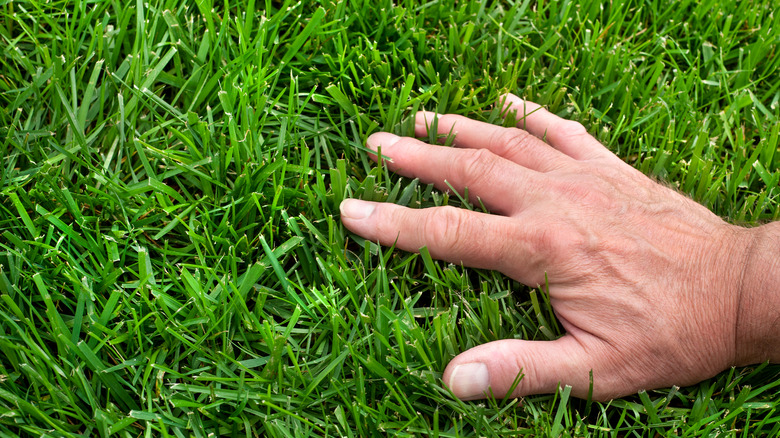A lush green lawn may be your ideal goal, but try as you might, it just doesn’t seem attainable on your property. It could be that the kids and pets have worn it thin, creating bare patches. Sometimes, the grass looks like it’s barely hanging on even though you’ve watered and fertilized it. Insects, disease, or even a strange grass seed planted by the previous homeowners could all be causing your less-than-thick lawn. According to Tru Green, this might be the perfect reason to try the overseeding technique.
Overseeding is the process of adding more seed to your lawn without ripping it out and starting from scratch. It’s a great way to add more blades of grass without having to dig deep into the lawn, but it has to be done properly to ensure the seeds can germinate and grow as they should; throwing down a basic mixture of seeds isn’t going to do much more than feed the birds. Learning more about the overseeding method could help you finally achieve the most envied yard in the neighborhood.
Get the timing right

Overseeding at the right time of the year will help ensure success because proper germination relies on weather and soil conditions. Pennington recommends late summer to early fall planting to attain cool-season grasses in the northern portion of the country. At this time of the year, the cooler air helps to encourage germination. Overseeding at the right time also ensures each new blade has time to develop a stronger root system, allowing them to thrive during the harsh winter months to come when rain or snow in the north could tax them.
For those in the southern portion of the country, late spring tends to a better time for overseeding a lawn that is thinning with bare spots when you want summertime beauty. This should happen just as the grass is entering its active growth phase, or just before you have to bust out the lawn mower from winter storage. If you want to keep your lawn green during the winter months and areas need replenishing, you can also overseed southern grass during autumn, once the nightly temperature falls to 65 degrees Fahrenheit on a consistent basis.
How to overseed
Now that you’ve got the timing right, start the overseeding process by mowing your entire lawn low to the ground, slightly shorter than you normally would, advises Scotts. There are different types of grass seed, so choose the appropriate option, which is often a product specifically designed for your region to best adhere to sun availability, moisture requirements, and winter weather conditions. Consider the addition of fertilizer to the soil as this could create a stronger base for the seeds to sprout and develop, providing valuable nutrients at a critical time of growth.
It’s often necessary to improve the quality of your landscape with soil conditioners. Place a thin layer of enriched soil on the existing grass before seeding, but limit it to no more than 0.25 inches to minimize damage to the existing grass, per Scotts. Use a spreader to evenly sow the seeds, following manufacturer recommendations for how much seed to spread in a given area. Then, feed and water the seedlings. Keep the soil moist but not saturated in the days to come until the seedlings grow to match the length of the existing grass. Avoid cutting new grass until it’s reached this height.